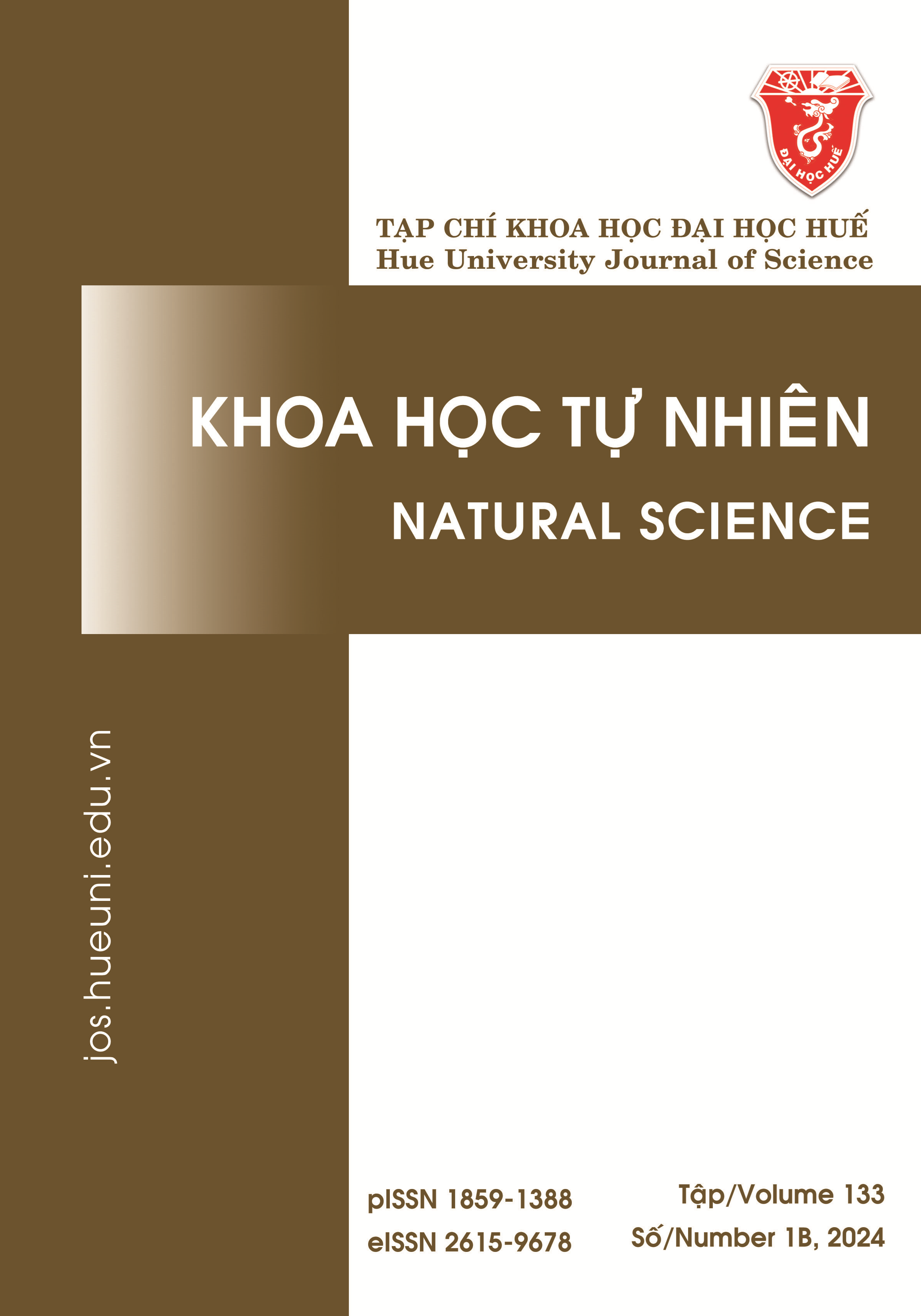Abstract
Polyphenols are among the natural antioxidants that have been exploited in recent years for their safe and effective ability against oxidative stress. This project aimed to optimize 3 factor-conditions affecting total polyphenols extracted from Perilla frutescens (L.) Britt as well as DNA protection activity of polyphenols for applications in the fields of dietary supplements, pharmaceuticals, and health care. All extracts contained phenolic compounds and exhibited good antioxidant ability through a ferric reducing antioxidant power assay. The total polyphenolic compounds varied from 6.056 ± 0.08 to 9.630 ± 0.127 mg of gallic acid equivalents (GAE) per 1 g dry weight (dw). The highest phenolic content yield was extracted at 70°C for 60 minutes at a pH of 7.0. However, a sample with the highest polyphenol content had a lower residual DNA concentration than the extract (55°C, 60 min, and pH 6.0) with the greatest reducing power. The result of the DNA protection assay also indicated that the extraction concentration and pH condition had a significant effect on preventing DNA from being damaged by free radicals. The study found the conditions for improving polyphenol in the extraction of P. frutescens (L.) Britt with the aid of Box-Behnken Design. This research also proposed that P. frutescens (L.) Britt is a good source showing DNA protection and antioxidant activity for healthcare.
References
- Sies H. Strategies of antioxidant defense. European Journal of Biochemistry. 1993;215(2):213-219.
- Buechter DD. Free radicals and oxygen toxicity. Pharmaceutical Research. 1988;5(5):253-260.
- Young IWJ. Antioxidants in health and disease. Journal of Clinical Pathology. 2001;54:176-186.
- Valko MRC. Free radicals, metals, and antioxidants in oxidative stress-induced cancer. Chemico-Biological Interactions. 2006;160:1-40.
- Wulf D. Free radicals in the physiological control of cell function. Physiological Reviews. 2002;82:47-95.
- Willcox JKAS. Antioxidants and prevention of chronic disease. Critical Reviews in Food Science and Nutrition. 2004;44:275-295.
- Koçyiğit A. Eksojen Antioksidanlar İki Yönü Keskin Kılıçlardır. Bezmialem Science. 2016;4(2):70-75.
- Ito NHM. Studies on antioxidants; their carcinogenic and modifying effects on chemical carcinogenesis. Food and Chemical Toxicology. 1986;24:1071-1081.
- Sasaki YFKS. The comet assay with 8 mouse organs: results with 39 currently used food additives. Mutation Research-Genetic Toxicology and Environmental Mutagenesis. 2002;519:103-119.
- Rajkumar VGG. Evaluation of antioxidant activities of Bergenia ciliata rhizome. Records of Natural Products. 2010;4(1):38-48.
- Pizzino GI. Oxidative stress: Harms and benefits for human health. Oxidative Medicine and Cellular Longevity. 2017; 1-13.
- Rahman MM. Effect of freeze drying on antioxidant activity and phenolic contents of Mango (Mangifera indica). International Food Research Journal. 2015;22(2):613.
- Heci Y. Valuable ingredients from herb perilla: A mini-review. Innovations in Food Technology. 2001;29:32-33.
- Meng L, Lozano Y, Bombarda I, Gaydou E, Li B. Polyphenol extraction from eight Perilla frutescens cultivars. Comptes Rendus Chimie. 2009;12:602-611.
- Rajasimman ND. Optimization and kinetics studies on biodegradation of atrazine using mixed microorganisms. Alexandria Engineering Journal. 2013;52(3):499-505.
- EA D. Phenolics: Prooxidants or antioxidants?. Nutrition Reviews. 1997;55(11):396-398.
- Rajbhar KA. Polyphenols: Methods of extraction. Scientific Reviews and Chemical Communications. 2015;5(1):1-6.
- Maisuthisakul P, Pongsawatmanit R, Gordon MH. Characterization of the phytochemicals and antioxidant properties of extracts from Teaw (Cratoxylum formosum Dyer). Food Chemistry. 2007;100(4):1620-1629.
- Zimeri J, Tong CH. Degradation Kinetics of (−)‐Epigallocatechin Gallate as a Function of pH and Dissolved Oxygen in a Liquid Model System. Journal of Food Science. 1999;64(5):753-758.
- Zeng L, Mẹngun M, Chen L, Liyong L. Stability of tea polyphenols solution with different pH at different temperatures. International Journal of Food Properties. 2017;20(1):1-18.
- He B, Zhang LL, Yue XY, Liang J, Jiang J, Gao XL, et al. Optimization of ultrasound-assisted extraction of phenolic compounds and anthocyanins from blueberry (Vaccinium ashei) wine pomace. Food chemistry. 2016;204:70-76.
- Shao PH. Analysis of conditions for microwave-assisted extraction of total water-soluble flavonoids from Perilla frutescens leaves. Journal of food science and technology. 2012; 49(1):66-73.
- Saifullah MM. Optimization of microwave-assisted extraction of polyphenols from Lemon Myrtle: Comparison of modern and conventional extraction techniques based on bioactivity and total polyphenols in dry extracts. Processes. 2021;9(12):2212.
- Siddiqui NR. Spectrophotometric determination of the total phenolic content, spectral and fluorescence study of the herbal Unani drug Gul-e-Zoofa (Nepeta bracteata Benth). Journal of Taibah University Medical Sciences. 2017;12(4):360-363.
- Oyaizu M. Antioxidative activities of browning reaction prepared from glucosamine. The Japanese Journal of Nutrition and Dietetics. 1986;44:307-315.
- John DB. Theory and Practice of Histological Techniques (Sixth Edition). Elsevier Health Sciences; 2008.
- Bayliak MM. Effects of pH on antioxidant and prooxidant properties of common medicinal herbs. Open Life Sciences. 2016;11(1):298-307.
- Ghatak SM. A simple method of genomic DNA extraction from human samples for PCR-RFLP analysis. Journal of Biomolecular Techniques. 2013;24(4):224-231.
- Adinortey MBAC. DNA Damage Protecting Activity and Antioxidant Potential of Launaea taraxacifolia Leaves Extract. Journal of Natural Science, Biology and Medicine. 2018;9(1):6-13.
- Vuong QV, Golding JB, Stathopoulos CE, Nguyen MH, Roach PD. Optimizing Conditions for the Extraction of Catechins from Green Tea Using Hot Water. Journal of Separation Science. 2011;34:3099-3106.
- Calderon-Montano M, Burgos-Moron E, Perez-Guerrero C, Lopez-Lazaro M. A Review on the Dietary Flavonoid Kaempferol. Journal of Medicinal Chemistry. 2011;11:298-344.

This work is licensed under a Creative Commons Attribution-ShareAlike 4.0 International License.
Copyright (c) 2024 Array




